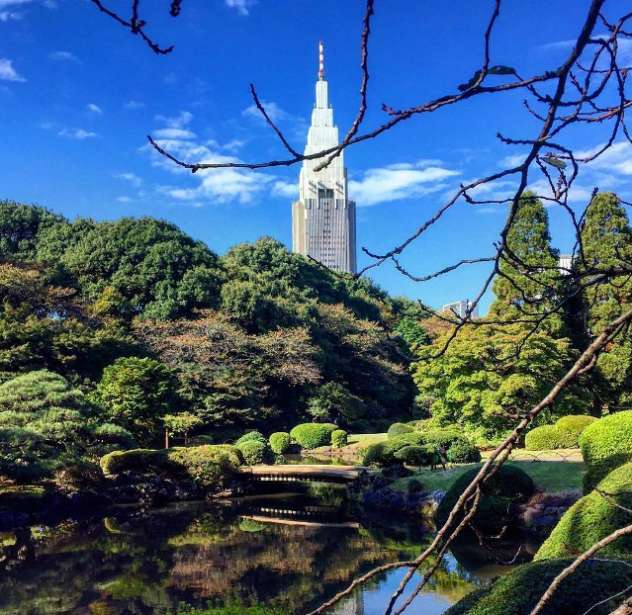There’s always calm to be found amongst the chaos
Whether it’s the noise and crowds or the sea of neon lights and tightly packed skyscrapers, Japanese cities promise an intense experience for your senses. They’re densely populated hives of life and activity like nowhere else on earth – but these vast, sprawling urbanisations have far more to offer than meets the eye at first glance. It might be hard to imagine, but the chances are you won’t have far to go for some peace and serenity. Take Tokyo’s Meiji Shrine: a short walk away from the kitsch and happening district of Harajuku, Meiji Shrine is situated across from the sprawling Yoyogi Park, and is home to as many as 100,000 trees.

Eat out on a budget – or splash out; the choice is really yours
Although a high-end, fine dining experience won’t be hard to find anywhere in Japan, quality food isn’t reserved for those seasoned (and less budget conscious) travellers keen to splash out. Around any business district, shopping area or train station, you’ll find an abundance of restaurants serving fresh sushi, rice, or noodle dishes for a modest amount of money. Here’s a tip: tachi-gui (stand-and-eat) restaurants are the cheapest way to eat out in Japan. And don’t forget about the street vendors – they’re a great excuse to stop for a snack at any time of day.

A place where tradition meets cosmopolitanism
Japan is definitely a country that’s moved forward without forgetting its heritage – and there’s nowhere better to appreciate that than any Japanese city. Take Tokyo’s Asakusa district. Emerging from the tall buildings, you’ll feel like you’ve turned back the clock a few decades as you walk along the low-lying streets of traditional shops, houses, ancient shrines and teahouses. Although more common in Kyoto, Asakusa’s Kannonura Street is one of the few places in Tokyo where you can still see geisha in traditional make-up. And then there’s Osaka’s old town of Kishiwada. Here, you’ll walk side streets that haven’t changed in decades, home to family-owned confectioners, grocers and tea brewers.

Concrete jungles encased in vast natural beauty
Granted, Japan has a high population for its size and nowhere does that become more apparent than standing on a street corner or walking through a transport hub. But it doesn’t always have to feel that way. If you’re slicing through the countryside on a shinkansen (bullet train) – you’ll soon see how much natural beauty and space surrounds the vast and densely populated urbanisations. And you can experience this from the comfort of a ryokan, a traditional Japanese inn famous for incredible hospitality and comfort. By spending a night in one of these, you could expect to be soaking up your natural surrounds from the comfort of a hot spring.

It’s a hard-working culture that knows how to tune-out
Like most cities in the world, lone businessmen and women dominate many of Japan’s city streets during the morning rush hour – super-charged for a long day at the office. But there’s also a great deal of value placed on rest and relaxation here. Take onsen, for example. Traditionally a volcanic hot spring used as a public bathing space, the communal onsen has perhaps become a concept beyond the natural experience, central to the Japanese way of life. Many rural inns and city hotels have reinvented the natural experience for the benefit of families and couples seeking some quality “downtime.” And for those who prefer their R&R to be livelier, remember, Japan was the birthplace of late-night karaoke.




















































